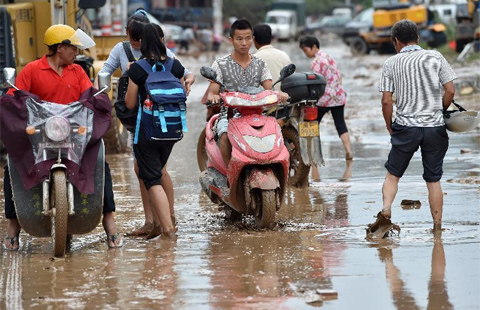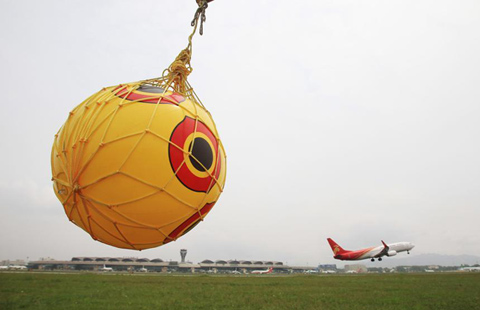
Most of these neighbors, which have close economic ties with China, have expressed willingness to link their own development strategies with the Belt and Road Initiative.
Russia, a comprehensive strategic partner of China, has agreed to integrate its aspiration under the Eurasian Economic Union (EAEU) framework with the Silk Road Economic Belt initiative.
Russian President Vladimir Putin has said that dovetailing the initiative and the EAEU's development strategy bears immense significance for Russia and China, as it will help strengthen bilateral cooperation in advanced technologies, transportation and infrastructure.
Last year, Xi and Kazakh President Nursultan Nazarbayev agreed to dock the initiative with the Path of Light economic strategy of Kazakhstan.
Mongolia also hopes to connect its ambitious Steppe Road plan, an infrastructure construction proposal to spur economic growth through trans-border transportation, with China's Belt and Road Initiative.
Kyrgyzstan, located in the hinterland of Eurasia, expects to use its advantages to facilitate cooperation among countries along the Silk Road Economic Belt and play a positive role in the integration between the initiative and the EAEU.
Meanwhile, the construction of the Tajik section of Line-D of the Central Asia-China gas pipelines is also a successful example of cooperation in building the Silk Road Economic Belt, which not only secures China's energy supplies, but also benefits its neighbors.
To battle terrorism, build economy on west front
Boosting the economy and battling terrorism are the top priorities in China's plan to develop its west, which is not only less developed, but also the most volatile patch of land in China.
They are also the priorities in China's cooperation with its western neighbors, for which the Belt and Road Initiative will unleash huge opportunities.
Regional countries have reacted positively to China's proposals.
Pakistan, which lifted its ties with China to an all-weather strategic partnership of cooperation this year, was among the first to implement the "Belt and Road" vision by pledging to participate in the building of an economic corridor linking its Gwadar Port in the southwest to China's northwestern autonomous region of Xinjiang.
The megaproject, which is a network of highways, railways as well as pipelines to transport oil and gas, is economically vital to both China and Pakistan.
Cooperation over the project also provides China and Pakistan an opportunity to upgrade security cooperation and information sharing in the fight against the three evil forces of terrorism, separatism and religious extremism as Pakistan is considered a main gate through which terrorists manage to enter China.
To a large extent, the corridor, along which a large amount of economic resources and actors are concentrated, will expand trade routes between China, the Middle East and Africa, provide fresh and strong impetus for the region's economic development, and is thus welcomed by some other regional players.
It also accommodates the interests of various players inside and outside the region, such as the United States, Russia and India.
It is hoped that in efforts to construct the project, all players will communicate and cooperate broadly to build a community of common destiny and achieve win-win results, while avoiding spurring suspicion of third parties.








